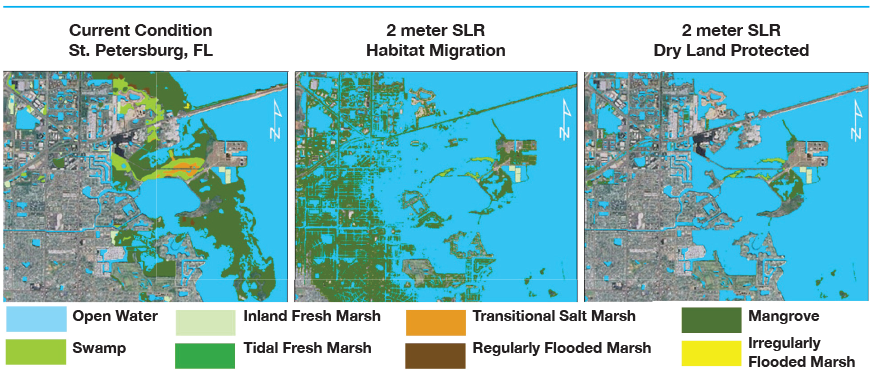Written by Lindsay Cross, environmental science and policy manager at the Tampa Bay Estuary Program, the handbook is designed to provide critical information to environmental professionals as well as the community stakeholders who will be needed to ensure long-term success. It highlights examples from National Estuary Programs such as the Tampa Bay Estuary Program and National Estuarine Research Reserves around the Gulf coast.
“The important thing about the handbook is that it connects scientists with policy makers and planners,” notes Gary Mitchum, associate dean and professor of physical oceanography at the University of South Florida’s College of Marine Science. “They need to know the range of possibilities and potential actions they can take to prepare for sea level rise.”

And while some people still question the numbers on sea level change, it’s an ongoing phenomenon that has been happening throughout geologic time with long-term data collected for at least the last century. “Around the world, sea level has risen about eight inches since 1880,” Cross said. “Continuing that trajectory would result in sea level rise of about seven inches over the next 100 years.”
However, this is considered a best-case scenario. The worst-case scenario, international scientists predict, would include maximum loss of ice sheets and melting glaciers and could result in sea level rise of 6.6 feet by 2100.
Natural systems, like marshes and mangroves, are generally capable of moving upland to survive – as long as they aren’t stopped by man-made structures like sea walls and roads. “For example, marshes may transition to mangrove forests, and the marshes may move into a beach area,” she said. “However if there are hardened structures, the habitats may be prevented from moving upslope and may become ‘squeezed off,’ ultimately leading to losses in habitats that support valuable fish and wildlife species.”
Along with the intrinsic value of natural areas, these systems protect other coastal areas during hurricanes and other extreme weather events. “They function as a first line of defense against the damaging effects of high winds and waves.”
Methods used to protect natural systems vary significantly, even across the Gulf of Mexico. In Texas and Louisiana, sea level rise is exacerbated by land subsidence and wetland losses are extreme. Those communities are rebuilding wetlands by filling in open-water areas with mounds or bars of sediment and planting them with native species.
In Florida, Punta Gorda has made significant strides toward preparing for sea level rise and climate change – in large part because they felt the impact of Hurricane Charley and took steps to prevent that kind of damage in the future (See Bay Soundings, Spring 2011). Along with a series of steps designed to save water and protect ecosystems, Punta Gorda has created rolling easements that allow private property to be maintained until water levels are high. Those private parcels then become public and are allowed to recolonize with native habitats.
In Tampa Bay, the TBEP partners have focused on restoring the balance of ecosystems (see Bay Soundings, Fall 2010) to ensure that all fish and wildlife species have adequate habitats throughout their life cycles. Over the past decades, warming temperatures and higher sea levels already have resulted in an increase in mangroves at the expense of salt marsh and salt barrens. Still, researchers predict that total coverage of all coastal habitats will decrease as sea levels rise, including a total loss of salt barren habitat at 6.6 feet of sea level rise.
“A lot of communities, including Tampa Bay, are still in the planning stages when it comes to climate change and sea level rise,” Cross said. “What we haven’t really addressed is the next step – implementing those plans before it’s too late to have a significant impact.”
View a copy of the handbook (pdf file) or call 727-893-2765.
[su_divider]